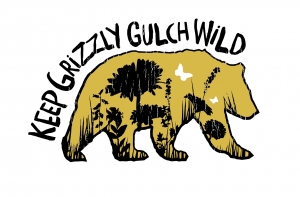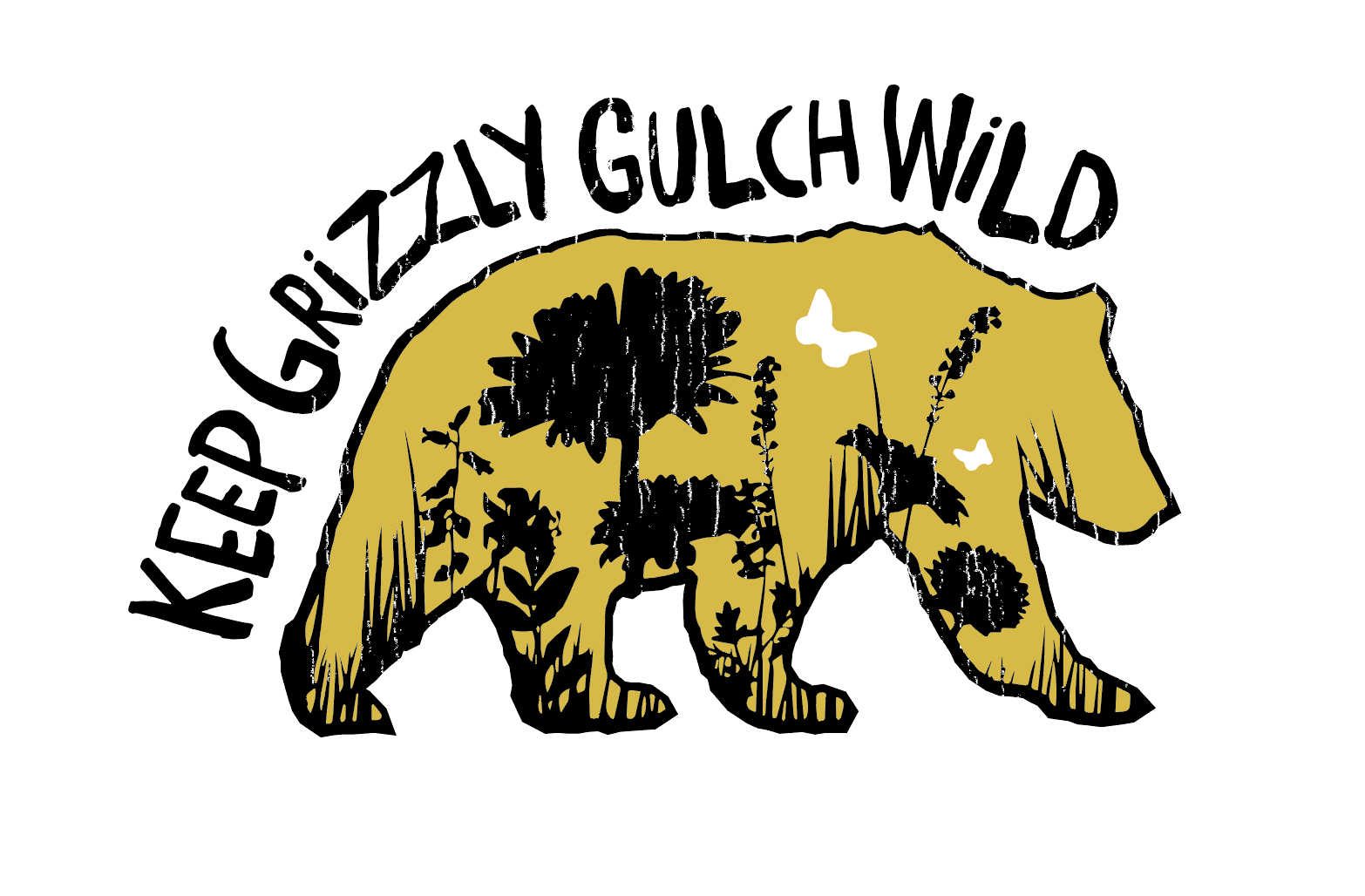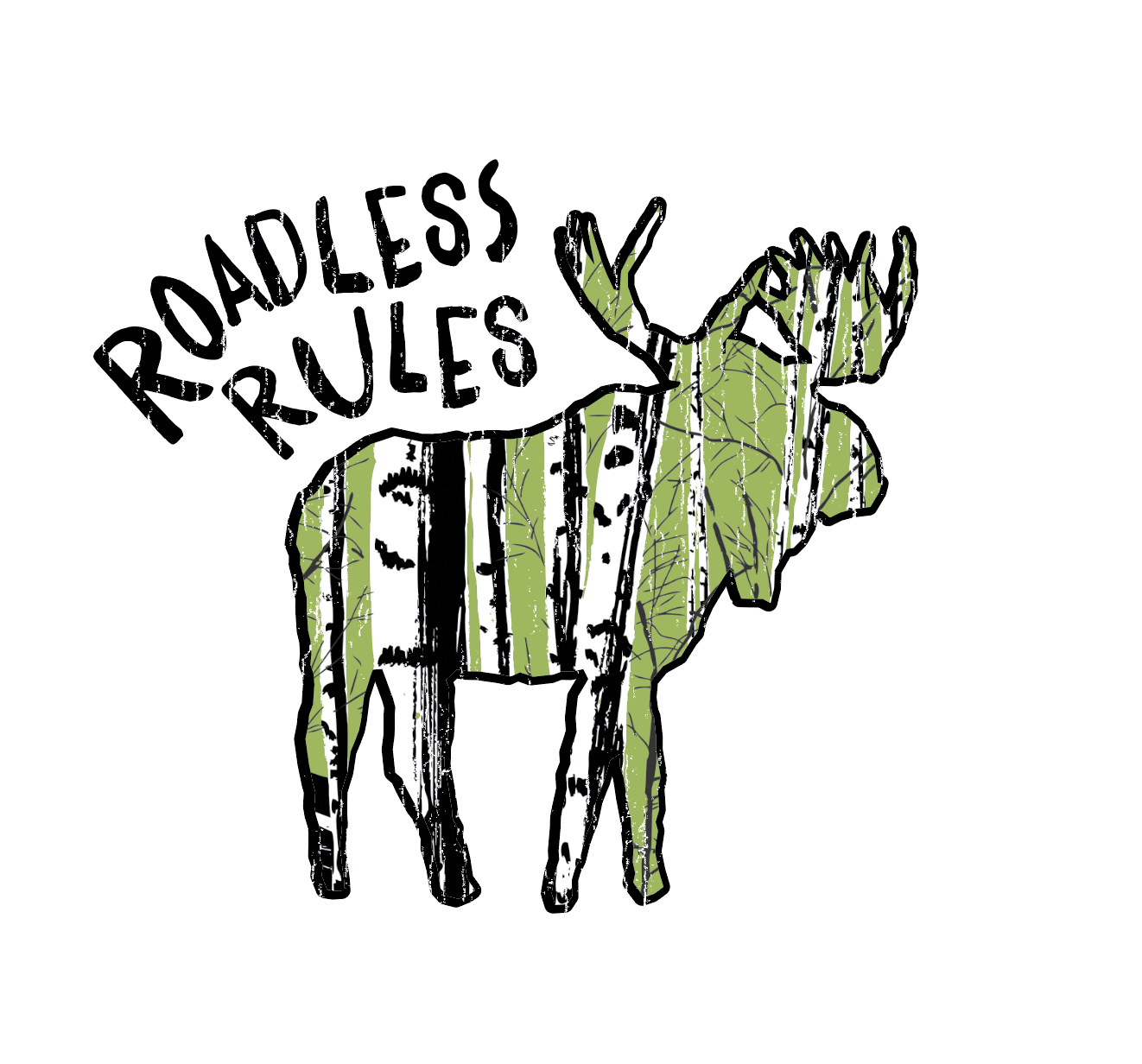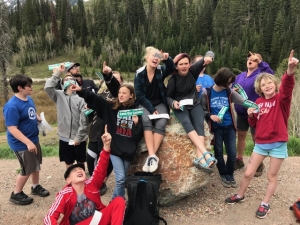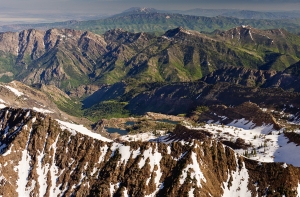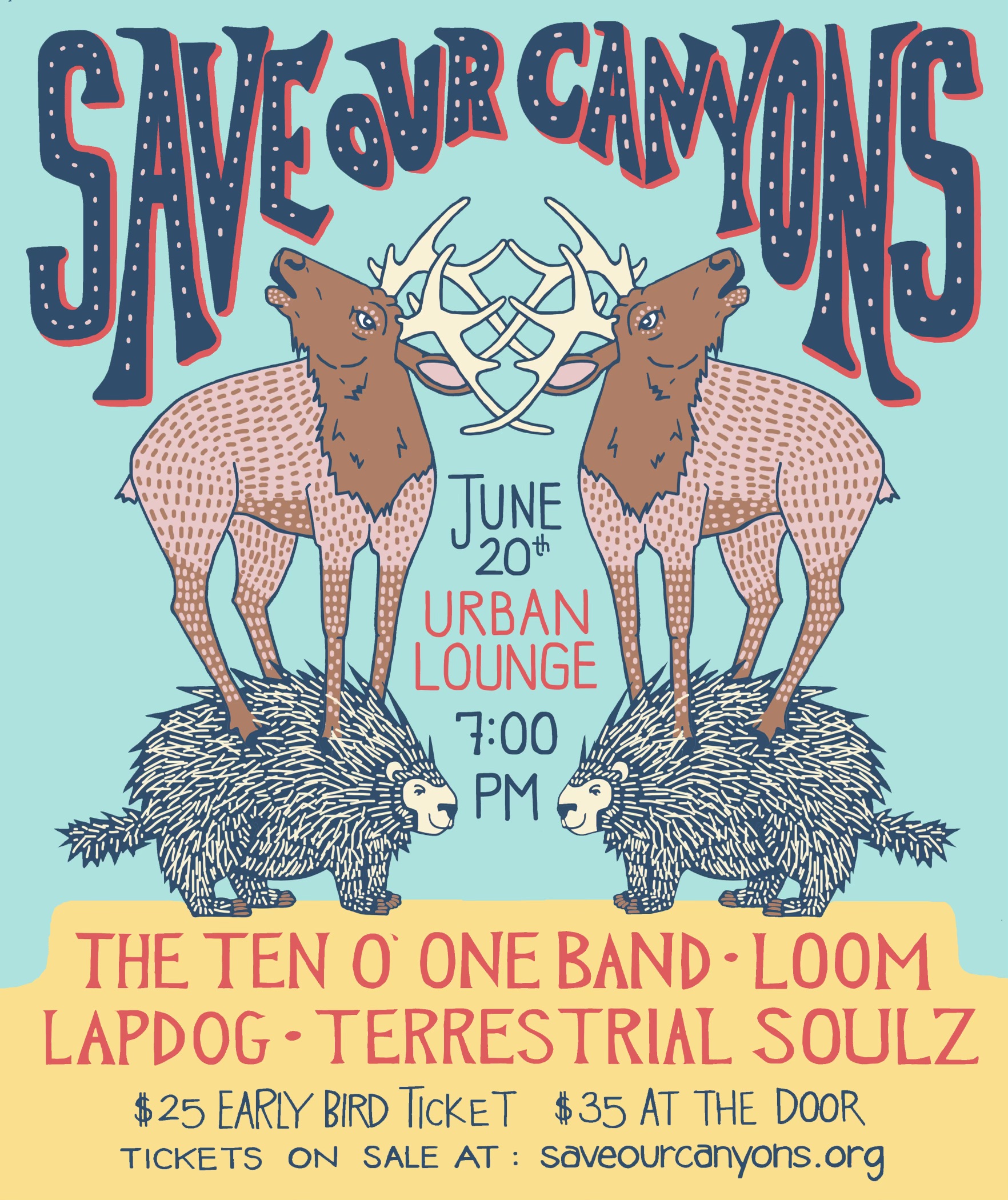Grace Tyler
Thank You Stacy Messerschmidt From Catchafire.org
We at Save Our Canyons have a lot of different talents, but drawing is not one of them! Thank you Stacy Messerschmidt from Catchafire.org for helping us with these amazing campaign illustrations. She volunteered her time to help with this project — and it never would have been done without her. If you are on Instagram make sure to follow her today, @stacymesserschmidt, and you’re looking for an illustrator visit her website today: www.stacymesserschmidt.com.
Help Keep Grizzly Gulch Wild by taking our pledge...
I do not support more sprawling development in the watershed and high alpine areas of Little Cottonwood Canyon. In the absence of land exchanges our canyons will be cluttered with more development degrading the viewshed and impact surrounding areas such as Mount Superior, Flagstaff, Grizzly Gulch, and the Cottonwood Canyons ridgelines.
I will not tolerate a land exchange for Alta, if Grizzly Gulch is off the table. This land which has been central to years’ worth of negotiations throughout Mountain Accord and now the Central Wasatch Conservation and Recreation Area Act. Alta's rehashed land exchanges does nothing to protect plants and animal species outside of the ski resort boundaries.
Tell the Governor and the USDA that more science and discussion from experts around the state must take place before altering the valuable protections of the Roadless Rule.
We need you to submit comments and perspectives to ensure protections of the roadless rule remain in place for these treasured lands that the Governor seeks to erode. Proposals that impact in excess of 4 million acres should be subject to more public scrutiny and robust, scientific data to inform decisions that will impact the legacy of our public lands for generations. Take Action Today!
Earth Day
By John Worlock, Member of Save Our Canyons
Monday, April 22 will be the 49th Anniversary of Earth Day, and we hope you have some plans for that celebration. My personal plan is to take a lawn chair and perhaps an umbrella and go sit where I can listen to the birds and the burble of Mill Creek, watching the green leafy things grow and reach for the sun.
You, however, can do much more. You can get up on your hind legs and take yourself deep into one of our extremely accessible Wilderness Areas. Allow me to remind you how fortunate we are to live with an arm’s reach of three Wasatch wildernesses: the Lone Peak, the Twin Peaks and the Mount Olympus.
If you want more than a solo celebration, go to the internet and search for a local celebratory activity that suits your fancy.
The first Earth Day, on April 22, 1970, sprang from a suggestion of a visionary politician, Senator Gaylord Nelson of Wisconsin. He had struggled through the 1960’ s to get Congress to take ecological concerns more seriously, and so he proposed a day when citizens, nationwide, would gather to raise awareness of environmental problems. There would be teach-ins, modeled on the college-campus activism of the 1960’s.
The idea took flight and the first Earth Day more or less organized itself nationwide. An estimated 20 million Americans gathered to confront the ecological troubles in their cities and states and even the planet. That event launched a decade of environmental legislation, including the Clean Air Act, the Clean Water Acts, and the National Wild and Scenic Rivers Act.
Earth Day has bloomed and blossomed and now involves over a billion people in virtually all the nations of the Planet Earth. It continues to grow even as the environmental winds blow sometimes hot and sometimes cold. It is even more important during those cold seasons, to express our concern for the livability of our locale and the viability of our planet.
Within the USA, the environmental winds are currently kind of chilly, so let’s celebrate Earth Day, and try to heat ‘em up a bit!
SOCKids and George S. and Dolores Doré Eccles Foundation
Our Wasatch Wilderness Stewardship and Education Project along with Save Our Canyons Kids helps to connect people to nature and restores our public lands. Our goal is to provide participants of these programs with the information and tools needed that can be applied at home to help create a long-term impact on the Wasatch. Current studies have shown that youth in urban areas are spending less than 7-minutes outdoors. Our wilderness areas are offer high quality natural areas but need stewardship and maintenance in response to intense use.
During 2019, we have a goal of expanding our Save Our Canyons Kids Program through the number of clubs, organizations, and schools that we partner with and increasing the number of youth that we educate. For the Stewardship project, is our goal to have more stewardship volunteer hikes, increase the number of volunteers for these events, double the miles of trails improved within our wilderness areas, and double the amount of trash picked up and water features cleared. Thank you Ben McAdams for helping us with this program and for writing this letter of recommendation helping us recieve $5,000 from the George S. and Dolores Doré Eccles Foundation.
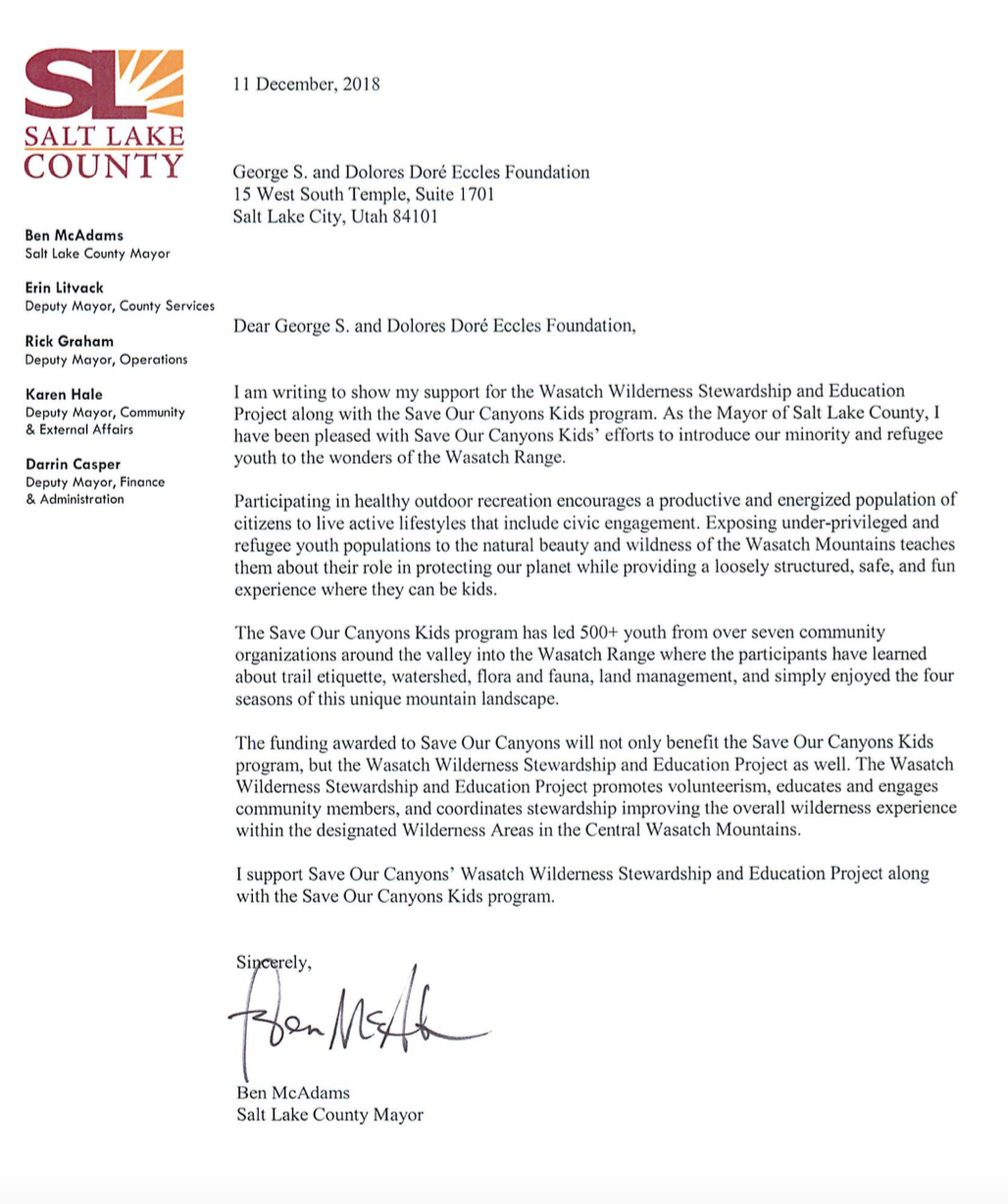
The threats to the Wasatch, to our watersheds, to the places that inspire our rapidly growing communities and the generations that will surely follow, are intense, complex, and need attention. What they need perhaps most of all is unity. We can show unity in a variety of ways by: attending a Save Our Canyons event, attending a public meeting, signing a petition, volunteering with our organization, or writing a Letter to the Editor or Op-Ed showing support for protecting the wildness and beauty of the Wasatch Mountains, canyons, and foothills.
What is an Op-Ed and LTE?
An Op-Ed is a relatively short piece of writing 500 to 750 words that appears opposite the editorial page (Op-Ed) in print media. Online sources have Op-Eds too (i.e. The Huffington Post, CNN, Deseret News, Salt Lake Tribune, and more). A letter to the editor (LTE) is shorter than an Op-Ed with about 200 words and typically does not contain as much evidence.
How do you write an Op-Ed and LTE?
Trying to figure out where to start in the Op-Ed or LTE process is often the hardest thing. Writing an LTE should be short and sweet just like taking a hike up Doughnut Falls. Within your LTE make sure you:
- State the Topic
- Explain why you don’t agree with it, including supporting facts
- Tell what you would like to see happen or suggestion
- Finish with a reference to the beginning and call to action
An Op-Ed is totally different than an LTE because you have triple the words to prove your point and the writing style is different than most articles. Most Op-Eds follow this kind of structure:
- Lede: This is the introduction section of your Op-Ed; it is intended to entice the reader into reading the full story. It is normally the first one or two paragraphs, 3 to 6 sentences in length. It tells the reader the “who, what, when, where” of your topic.
- Conclusion: This is the “why” or “why care” part of your Op-Ed. Yes, the conclusion may seem out of place based on writing approaches drilled into you during your education process, but you do need to bring the conclusion more to the front for Op-Eds. It is normally 1 to 2 paragraphs or 2 to 5 sentences in length. In many cases, authors will use a one-sentence paragraph to emphasize a particular aspect of the conclusion to ensure that the reader gives the idea more attention.
- Evidence: This is normally 3 to 6 paragraphs in length. The paragraphs, while still short compared to more standard writing styles, are often a bit longer than those from the Lede and Conclusion. This is because you are discussing examples and presenting expert statements that support your Conclusion. Concentrate on policies rather than people. There will be some educational aspect to your Op-Ed; however, be sure to live by the “show, don’t tell” mantra. Also, translate statistics into grounded numbers that can be easily digested by your reader. Avoid using jargon, but if you must use jargon, pause to quickly define—in two short sentences or less—the term and get back to your argument.
- Walk-off: This is where you explain how to go forward. All Op-Eds should be forward looking. That is, don’t just explain that there is some problem to which we should find a solution. Offer a possible solution. This is normally 1 to 3 paragraphs or 3 to 6 sentences in length.
Where do you send an Op-Ed/LTE and what’s included?
Letters must include the signature, full name, address, phone number and email address (if available) of the author for verification purposes. Only the name and city will be published.
Salt Lake Tribune
Deseret News
Sample Op-Ed and LTE
- Our intern, Djiini Yancey, put together a piece on the importance of public lands protection cross Utah, and the victory of the public lands package must not be undermined by changes to roadless area management: https://www.deseretnews.com/article/900059288/letter-public-lands-matter-to-utahns.html
- Ogden resident Spencer Alexander strength of the Roadless Rule's protection over Coldwater Canyon was able to preserve the area and help prevent the expansion of Nordic Valley: https://www.standard.net/opinion/letters/letter-utah-s-roadless-rules-need-to-remain-strong/article_241dfe41-d0de-58c0-9999-20288885f78e.html
- Jean Hill of the Catholic Diocese brings her perspective of inclusivity in the rulemaking process, and the potential threats to public lands access if we change the management of roadless areas: https://www.deseretnews.com/article/900062509/letter-let-utahns-access-the-outdoors.html
- Tanner Josey is a senior at Westminster who dedicated his capstone project in the Environmental Studies program to work with Save Our Canyons and create educational materials from fieldwork in roadless areas throughout the Wasatch. His editorial offers his perspective as a student entering the environmental field: https://www.sltrib.com/opinion/commentary/2019/03/31/commentary-herberts/
EIS for UTA’s plans for Little Cottonwood Canyon Road
By John Worlock, Member of Save Our Canyons
We have an important opportunity, for the next few weeks, to help the Utah Department of Transportation as they prepare an Environmental Impact Statement for what they call the Little Cottonwood Canyon Project. Until May 3rd, we are invited to comment on their ideas for improving motorized transportation in that canyon.
These are not the pie-in-the sky notions of rail transit or even gondolas whisking people up and down the canyons and even over the top into Park City and beyond. No, the current Little Cottonwood Canyon Project concentrates on the roadway and how it can be made safer, as well as more convenient and reliable.
Here is how UDOT describes the project: “The Environmental Impact Statement (EIS) is focused on immediate needs, as well as projected population growth and associated traffic in Little Cottonwood Canyon, by addressing roadway capacity, avalanche mitigation, trailhead parking and traffic congestion.” Some words are expended on bicycle and foot traffic, but strangely, very little attention is given to the possibility of increased bus service, although the proposed parking lots at trailheads do offer bus turnouts.
To study UDOT’s ideas go to Udot dot Utah dot gov slash littlecottonwoodEIS. Study the first chapter: “Draft Purpose and Need.” Read about their ideas for trailhead parking at Bridge, Lisa Falls and White Pine, and for avalanche mitigation including snow sheds at a variety of important sites along the roadway. Study their ideas for increasing the roadway capacity, involving additional lanes.
All of this is well and good if done in a tasteful way. But what more or less terrifies this observer is the intention to accommodate the increase of traffic from projected population growth. If we increase the canyon traffic, we will put more people into the canyons and the mountains. Can the canyons and the mountains entertain more people without degradation of the things that we value? For example: solitude and wildlife and the sheer beauty of the wild, high-altitude setting.
Udot should be studying and proposing ways of controlling and limiting canyon traffic rather than increasing it.
Anyhow, the Udot website will give you an opportunity to study and then comment on their EIS. Listen carefully now: it’s udot dot Utah dot gov slash littlecottonwoodeis.
Natural Resources Management Act of 2019
By John Worlock, Member of Save Our Canyons
For a few weeks we’ve been celebrating the passage of the Natural Resources Management Act of 2019, and we expect to be celebrating its provisions for many years to come. It is probably the most important environmental legislation in half a century.
Earlier we promised a run-down of its particulars, but you are going to have to make do with an abbreviated version. We have the full text of the bill, known as S.47, on our computer, all 695 pages of it. It is not rollicking reading material, as it devotes itself to legal definitions and specific locations identifiable, perhaps, to surveyors. There is no fancy language describing the scenery or the wildlife, or even justifying the act’s motivations.
Many of the act’s creations are quite minor, in our opinion, as for example a National Comedy Center in Jamestown, NY. But let’s start with some of the most important provisions of S.47.
First, nationally, is the restoration of the expired Land and Water Conservation Fund. Also nationally, there is the Get Kids Outdoors piece, providing free access to fourth graders and their sponsors to National Parks.
For Utah, though, first is the creation of 2/3 million acres of Wilderness in Emery County around the San Rafael Swell and Muddy Creek and along the Desolation and Labyrinth Canyons of the Green River. In addition there are 200000 acres of a new San Rafael Swell Recreation Area, closed to new mining claims and to any new OHV routes. Also 63 miles of the Green River are now protected as Wild and Scenic.
Nationally, there will be many pieces of new and expanded Wildernesses, totaling another 2/3 million acres, along with equivalent acreage of Recreation and Conservation Areas, largely withdrawn from mineral development.
The overwhelming popularity of this act in Congress may be related to how its impact is spread widely across the nation, along with its many provisions catering to sports folk such as fishers, hunters and target-shooters.
Finally, the Congressional Budget Office predicts that the act will save $9 million dollars in the next ten years plus raise some additional revenue. Not much against the national deficit, but we’ll take it gladly, thank you!
Another Miracle in Washington, DC
By John Worlock, Member of Save Our Canyons
Can you believe it? We suddenly have more good news from Washington, following two years of assaults on the natural environment by the government. A very hard couple of years.
So now, let’s Accentuate the Positive, Eliminate the Negative, Latch on to the Affirmative and talk about the recent triumph of the Natural Resources Management Act, which just last week whistled through the House of Representatives with a bipartisan majority of 85%! It had cleared the Senate earlier with an even bigger majority. With majorities like that, we don’t need to worry about a presidential veto.
How did such an environmentally friendly act fly through Congress? We note that it was a composite of 170 separate proposals, and we suspect that they are spread widely and wisely throughout the nation, picking up key votes where they were needed. If that’s called log-rolling, so be it. It’s very welcome log-rolling. The Natural Resources Management Act of 2019 is reckoned to be the most important such legislation in half a century.
In the weeks to come, while we studiously ignore the misguided efforts of the Utah Legislature, we will try to bring home to you some of the provisions of this federal action that will have important impact on the nation.
But for now, we note that for Utah, the most important consequence of the Act is the creation of 2/3 of a million acres of Wilderness in Emery County, a vast improvement on the lukewarm proposals of Hatch and Curtis’s Emery County Land Management Act. Please go to the website of the Southern Utah Wilderness Alliance, at s u w a dot org, and soak up the information in a multitude of excellent maps of Emery County, showing the San Rafael Swell Recreation Area surrounded by many big chunks of Wilderness, as well as the stretches of the Green River designated as Wild, Scenic or Recreational.
For a broader description of the consequences, we recommend the website of Outside Magazine at outside online dot com. They will tell you about the permanent reauthorization of the Land and Water Conservation Fund, and a lot more.
Those websites were s u w a dot org and outside online dot com. Go, learn and celebrate!
Central Wasatch Visitor Study
Save Our Canyons partnered with the US Forest Service and Salt Lake City to undertake the Central Wasatch Visitor Study (CWVS). It involved hundreds of volunteers and lasted for a full year, in order to account for the strong seasonal variations in recreational styles. The work was overseen by Professor Steven W. Burr and Master's student Chase Lamborn from the Institute of Outdoor Recreation and Tourism at Utah State University with two volunteer coordinators hired through the Americorps Utah Conservation Corps program.
![]() CWVS Introduction (Spring 2014)
CWVS Introduction (Spring 2014)
![]() CWVS Second Quarterly Report (December 2014)
CWVS Second Quarterly Report (December 2014)
![]() CWVS Midterm E Survey (February 2015)
CWVS Midterm E Survey (February 2015)
![]() CWVS Third Quarterly Report (April 2015)
CWVS Third Quarterly Report (April 2015)
Below are just a few of the findings from the CWVS thus far:
- When asked “why they visit public lands” CWVS respondents ranked “observe scenic beauty,” “enjoy the sights and smells of nature,” “experience peace and tranquility,” and “improve physical health” as the most important motivating factors for recreating in the Central Wasatch.
- When asking respondents of the CWVS if they are recreating in a protected watershed, 72% correctly answered YES.
- When asked “do you know if this National Forest has Congressionally designated Wilderness Areas” 63% of respondents said YES
- Hiking, primitive camping (backpacking in unroaded areas) and backcountry skiing are the top 3, of many, activities respondents report participating in on the Wasatch Wilderness.
- A high number of respondents supported increased opportunities for public transportation to access recreation sites and a great majority support expansion of Park and Ride transportation system to have more pick ups outside the canyons.
- Over 60% of respondents reported getting at least 80% of their exercise from outdoor year round recreation. With the number one response as to why being “outdoor recreation helped them feel more patient with themselves and others.”
These findings clearly demonstrate that users of the Central Wasatch Mountains value access, protections and the diverse opportunities afforded on these public lands. Having Wilderness-designated lands and a protected watershed is important to them, their families and their quality of life. The majority of respondents to the “E-Survey” component of the CWVS strongly agreed with the statement “access to recreational opportunities is an important reason why I live here.” Agreeing strongly, as well to “I would think more often about moving if there were fewer outdoor recreation opportunities nearby.” Outdoor activities such as hiking, resort skiing/snowboarding, trail running, backcountry skiing, mountain biking and rock climbing provide valuable opportunities for healthy exercise. Preserving this unique landscape for all the numerous activities that make up this dynamic community along the Wasatch Range is vital.
The information collected will be used to guide decision makers, illuminating, for example, the deliberations of the Mountain Accord process.

